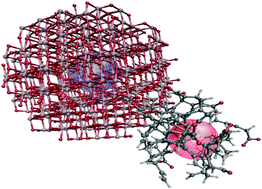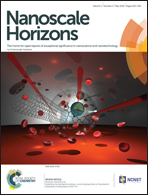Using carbon nanodots as inexpensive and environmentally friendly sensitizers in mesoscopic solar cells†‡
Abstract
We discuss the use of carbon nanodots (CNDs) as sensitizers in mesoscopic solar cells. The CNDs are synthesized using a one-step, bottom-up microwave approach with citric acid, urea, and formic acid as precursors in aqueous media. Their light-harvesting capabilities can be tuned by adjusting the synthetic parameters. Comprehensive spectroscopic and theoretical studies allow us to rationalize the nature of their absorption features. Promising power conversion efficiencies (η) of 0.24% can be achieved from these cheap and eco-friendly sensitizers by optimizing the solar-cell assembly process. Interestingly, we found that extending the light absorption towards longer wavelengths does not necessarily improve the performance of the solar cells, since the longer-wavelength absorption features hardly contribute to the cells' photo-action spectra, so that the overall power conversion efficiency is actually worse. The origin of the lower performance is corroborated in transient absorption spectroscopy and photovoltage decay measurements. Our work points, on one hand, to the limits of as-synthesized CNDs as photosensitizers and, on the other hand, to possible improvements.


 Please wait while we load your content...
Please wait while we load your content...